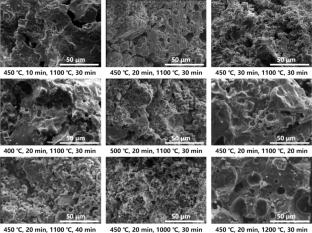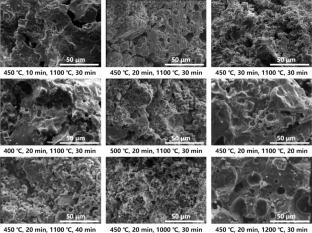Physical properties and microstructure of sustainable lightweight aggregates prepared from lead–zinc tailings and fly ash under different sintering regimes
Abstract
Lead–zinc tailings (LZT), a low-value mining waste, pose significant environmental and health risks due to their massive accumulation. This study addresses the need for harmless and efficient treatment of LZT by successfully producing lightweight aggregates (LWA) from 100% solid waste (low-cost LZT and poor-quality fly ash) without secondary pollution. The relationship between sintering conditions and LWA properties was investigated, revealing that sintering temperature significantly influences LWA performance more than other parameters. Specifically, it is the core factor controlling particle density, while both sintering temperature and time strongly affect compressive strength. Microstructure analysis showed that over 50% of the total pore area consisted of pores with diameters of 100–1000 μm. Insufficient preheating or excessively high sintering temperatures led to the formation of pores larger than 1 mm, while extending sintering time from 20 to 40 min increased the proportion of 100–1000 μm pores. XRD and FTIR analyses indicated that strength development was attributed to the formation of aluminosilicate skeletons and feldspar phases during sintering. Life cycle assessment (LCA) revealed that sintering at 1100–1150 °C for 30–35 min optimally balances LWA strength, energy consumption, environmental impact, and cost. This study offers an innovative and eco-friendly strategy for low-energy utilization of multi-source solid waste.



 求助内容:
求助内容: 应助结果提醒方式:
应助结果提醒方式:


